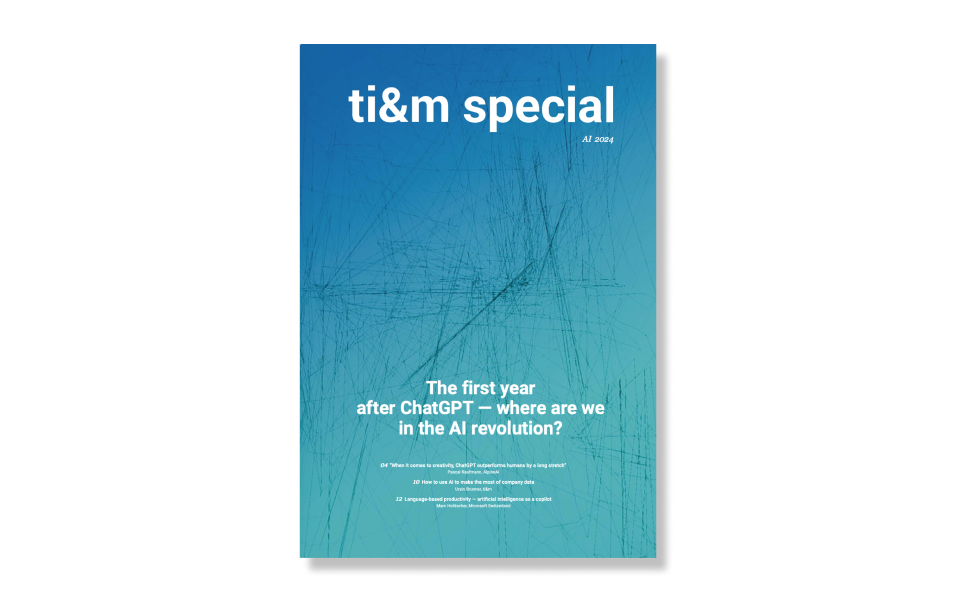
Handling data poses many challenges. But the potential that professional data management offers is equally significant. That’s because if we want to better understand the market, its trends and our customers, we need to use data efficiently while also complying with legal and regulatory requirements and monitoring cybersecurity risks. The best way to manage these complex tasks is to set up a professional data and analytics organization. In doing so, you’ll forge forward with the matter in terms of strategy and, at the same time, take responsibility for its operational implementation. A data and analytics organization includes the following factors:
Data target vision: Developing or continuing with the further development and implementation of the target vision with regard to data.
Data governance: Embedding control and management frameworks and roles with competencies and responsibilities into the corporate organization.
Data architecture: Defining data objects and potential data products, as well as creating transparency and traceability with regard to the origin and flow of data through company systems.
Data lifecycle management: Defining and complying with policies, guidelines and standards for the collection, storage, processing and use of data through to its deletion or archiving.
Data quality management: Ensuring that the quality of the data meets the business requirements for its use.
Data analytics: Creating added value for the company through the use of analytics and AI.
Data security: Ensuring the protection of data management systems against unauthorized access, as well as disaster and recovery management.
Data infrastructure: Providing the necessary technological systems for the efficient use and management of data.
Compliance and ethics: Defining and complying with policies, guidelines and standards for the ethical use of data in line with legal and regulatory guidelines.
The aim of a data and analytics organization
The aims behind data use vary from company to company. A data-driven company pursues the aim of assigning business value to data and managing it as a product. Other companies simply want to minimize their reputational risk from data loss, or ensure compliance with regulatory or legal requirements and ethical values when handling data. Regardless of the overarching aim being pursued, a data and analytics organization creates clarity with regard to the tasks, competencies and responsibilities related to data handling, cooperation between the stakeholders involved, and monitoring and control processes.
The appropriate type of data and analytics organization depends on the strategic aims behind a company’s data use, the data maturity, and the independence and heterogeneity of the individual departments. Companies can choose a decentralized, hybrid or centralized organization (see Figure 1).
The three types of data and analytics organization
Decentralized: There is no centrally defined data strategy, and no policies, guidelines or standards that apply to the entire company. In a decentralized organization, the individual departments have sole control over the conceptualization and implementation of the above-mentioned data capabilities for their department. This makes it possible to quickly introduce solutions that meet the specific needs of each department. However, a great deal of data expertise is needed in the individual departments, and this type of organization generates few company-wide synergies.
Possible area of application: This form of organization is typical for holding companies or partnership-based business models (consultancies, law firms, etc.) in which the departments develop their own strategies and are strongly driven by local P&Ls.
Centralized: With a completely centralized data and analytics organization, the data strategy, policies, guidelines and standards are defined consistently throughout the company, and data expertise is amalgamated centrally. This creates synergies and also allows the departments to carry out their work with a greater depth of data expertise. However, there is a risk that the solutions will not meet the needs of the departments and that the departments’ freedom will be disproportionately restricted. It’s also worth noting that this model doesn’t give the departments the option to take on tasks themselves in the future.
Possible area of application: For highly regulated companies that want to maintain a high level of control over the use and management of data.
Hybrid: There’s a broad range of different forms that fall between completely centralized and completely decentralized — a hybrid form of organization combines the strengths of both approaches. In more centralized forms, the conceptualization of data capabilities in particular is stipulated for the entire company by a central team, and implementation takes place in a more decentralized way in the departments. The more decentralized the organizational form, the fewer conceptual requirements are defined centrally and the greater the freedom and responsibilities of the departments. This enables companies to amalgamate lesser competencies centrally, set consistent strategic directions and, at the same time, give the departments the freedom they need. However, this form of organization tends to require more coordination and communication than the other two.
Possible area of application: This form of organization is generally suitable for all industries and sectors, such as health insurance, energy providers and customer-oriented sectors such as retail, tourism and start-ups.
What needs to be considered when determining the appropriate form of organization?
Setting up a data and analytics organization requires careful planning and several criteria must be considered. Here are some key aspects that should be taken into account when designing and implementing an organization of this kind:
–Which relevant data handling skills need to be developed internally or externally?
–How can synergies be realized between the various departments?
–How much freedom should the various departments have in handling data in their individual specialist areas?
–How can I best integrate the data organization into the existing organization?
–How do I ensure data is used ethically, taking into account the relevant data protection guidelines?
Conclusion and outlook
Establishing a data and analytics organization anchors roles with clear tasks, competencies and responsibilities with respect to handling data. It enables the various stakeholders to work together and consolidates a clear control and management process. This enables a company to keep data and its use under control in the long term and to exploit its potential effectively, while also minimizing risk.
However, finding the right data and analytics organization can be a challenge and there are lots of factors to take into account. In our experience, it’s essential to create freedom to drive innovation within the departments, while minimizing data risks and complying with relevant regulatory requirements. Our data and analytics experts can help you define your requirements and use them to build a data and analytics organization that is right for you.





